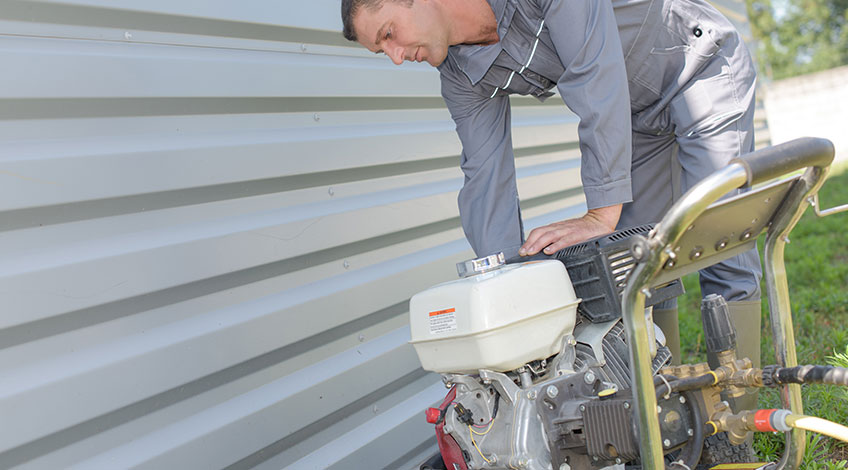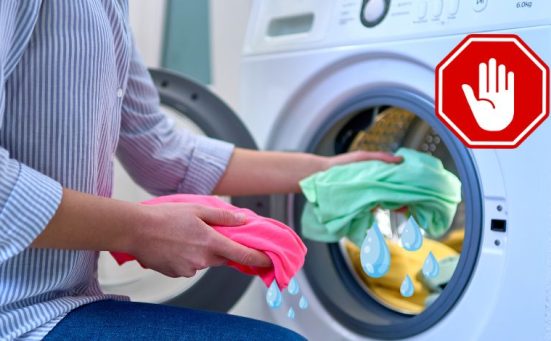
Pressure Washer Smells Like Burning? This Might Be Why…
There’s no question that using a pressure washer for cleaning patios, drives, cars, boats, barbeques, and much much more is a fast, fun way to get the job done. Sometimes, things happen that just don’t seem right, like a burning smell when using your pressure washer. There are a number of reasons for this but first things first.
Turn off the pressure washer and remove the plug from the power supply. Now that there’s no fear from electrocution, you can take a proper look at your pressure washer and identify the problem.
Why Does My Pressure Washer Smell Of Burning?
The first thing to check with this electrical problem is the extension cable. You should never use an extension cable longer than 10 metres (30 ft) and it has to have a Residual Current Device (RCD) fitted to protect from any electrocution issues. If the extension cable is too long or not of the correct amperage (it should be a steady 13 amps), this can cause overheating problems with the pressure washer.
The extension cable should also be fully unwound before using.
Overheated Motor

If you run your electric-powered pressure washer for too long on a hot day in direct sunlight it can cause the motor to overheat. If the motor does overheat, you will smell burning and often notice smoke coming from the motor casing. If this happens turn the pressure washer off immediately and unplug the power supply.
Contact your manufacturer if your unit is still under warranty or if not, take it to a repair shop, or consider buying a new pressure washer. It often costs more to repair a pressure washer than to replace it with a new one.
How To Repair The Motor Yourself

If you are technically minded and you’re sure the motor is the cause of your problems, it is possible to repair the motor yourself. The following step by step guide will help make this job easier to tackle.
- Turn off the pressure washer – And disconnect from the main electrical supply.
- Dismantle the pressure washer – Start by removing the hoses from the machine, then unscrew and remove all of the body parts of the washer.
- Remove the motor and casing – Remove the detergent hose and the main power lead from the motor casing. Then remove the motor casing from the machine.
- Open the motor casing – Remove the clips holding the casing in place to expose the motor.
- Replacing the switch – Remove the old switch by gently twisting it and working it away from the main assembly. Then remove the switch lever by twisting it 180 degrees. Fit the new switch in place, and replace the switch lever. Then reattach the electrical connectors, making sure the switch engages with the water pump control valve.
- Replacing the carbon brushes – By moving the spring that holds them in place and gently removing the brushes and disconnecting the electrical connectors. Take the new carbon brushes, ensuring the spring clip is out of the way and place them into position. Once they are correctly installed the spring clip will hold them in place, reconnect the electrical connectors.
- Replace the motor into the casing – Once you’re happy with the switch and carbon brushes put the motor back into the casing, ensuring the switch fits into place and the capacitor is sitting flush. Push the capacitor into its compartment and fit the wires snugly into the groove and be sure they don’t get pinched by the casing. Check that the main power supply cable doesn’t get snagged in the casing when refitting the casing.
- Replace the motor into the pressure washer body – Place the motor back into the body of the pressure washer and replace the power lead, and detergent hose, then screw the casing back together.
If after doing all this, the unit still smells of burning, it could be the capacitor.
How To Replace The Capacitor
This is a relatively easy part to replace and takes even less time than repairing the motor. Here’s how to replace the capacitor in 3 easy steps.
- Remove the old capacity – Depending on which model you own, the capacitor is usually located between the pump and the motor. Remove all screws and remove the old capacitor.
- Replace the capacitor – Place the new capacitor and connect the connectors-once it’s in place re-screw the screws in.
- Resite the motor and pump assembly – Once the capacitor is in place you can return the pump and motor assembly back into the case. Be sure to fit the pump and motor back into their respective positions correctly to ensure correct assembly.
If after doing all this the pressure washer still smells of burning, it’s time to buy a new model. To help you make the best choice for your situation click here to read our best pressure washers buyers guide.
Also, follow us on Pinterest ...



